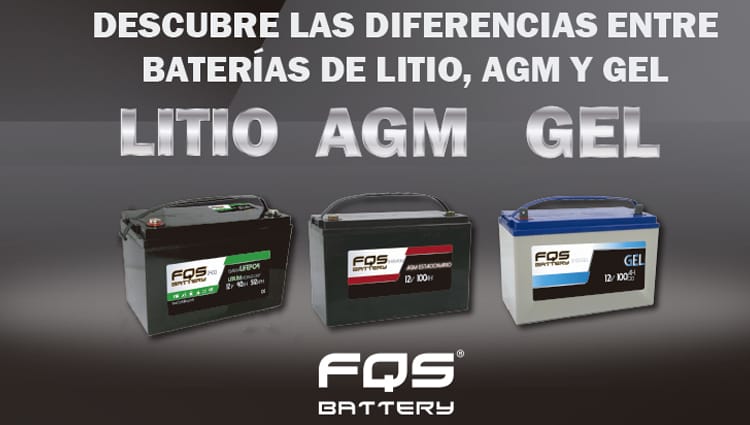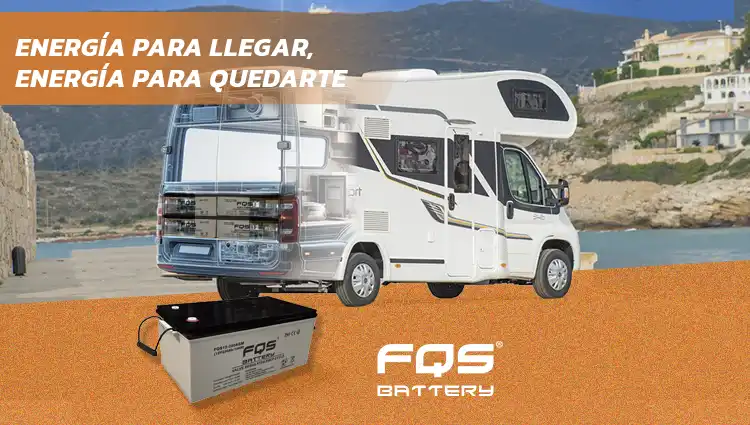The key differences between Lithium, AGM and Gel batteries lie in several aspects: their Technology, lifespan, size and performance in extreme temperatures, as well as the depth of dischargeChoosing the right battery will depend on your specific application needs and your preferences for durability and performance.
So, how do you choose the right battery? First, consider and understand their differences.
Lithium, AGM, and Gel batteries are three different types of batteries used in various applications.
1 – Technology and chemical composition
Not familiar with these batteries? Don't worry, here's a quick introduction to help you learn a little more about each one:
- Lithium batteries: A lithium iron phosphate battery either LFP battery is a type of rechargeable battery, specifically one lithium-ion battery with a cathode of lithium iron phosphate: LiFePO.
LiFePO4 batteries feature a energy density somewhat smaller than the more common LiCoO2 (lithium cobalt oxide) that are frequently found in electronic devices, but offer greater durability (up to 10 years), greater power and are inherently safer, which is why they are frequently used in robotics, electric vehicles and energy storageThey are known for their high energy density and its fast charging capability. They are lightand compact compared to lead-acid batteries. - AGM batteries are sealed lead-acid batteries that employ an absorbent glass separator to keep the sulfuric acid immobilized instead of liquid. This makes AGM batteries maintenance-free and sealed.
- Gel batteries: They are also sealed lead-acid batteries, but instead of a liquid electrolyte, they use a thick silica gel electrolyte, and the separator material is the same as in AGM, fiberglassThis makes them more resistant to heat and cold and very deep discharges.
2 – Useful life and charge and discharge cycles
In this section, we will differentiate the life cycle of batteries:
- Lithium batteries: They have a longer service life compared to lead-acid batteries. They can last between 5 and 15 years old or more, depending on quality and use. Its DOD (Deep Discharge) capacity of up to 100% is noteworthy.
- AGM batteries: They have a moderate lifespan, that is, they can last between 3 and 5 years under normal conditions of use.
- Gel batteries: Designed for long-term applications where the battery is frequently charged and discharged. Very good performance. Three times longer than AGM batteries. They can last up to 5 years.
3 – Uses of each battery
- Lithium Batteries
- Electric vehicles
- Portable devices
- Renewable energy storage
- Drones
- Medical and emergency applications
- Consumer electronics
- 100% DoD
- AGM batteries
- Solar, renewable energy systems.
- Electric rolling stock
- Vehicles for people with reduced mobility
- Medical storage
- For applications requiring regular, deep discharges. 75% DoD
- Gel Batteries
- Solar energy, renewables.
- Low-speed or small electric vehicles
- Alarm and security systems
- Electric wheelchairs
- Solar energy systems
- Other applications requiring a long-lasting and reliable power source. 85% DoD
4 – Weight and size of the batteries
- Lithium batteries: They are lightweight and compact, making them ideal for applications where weight and space are critical, such as in electric vehicles and portable devices.
- AGM batteries: Are heavier and bulkier compared to lithium batteries, but lighter than gel batteries.
- Gel batteries: Are heavier and larger than AGM batteries due to the gel electrolyte they contain.
5 – Battery performance in extreme temperatures
It is essential that you know the temperature that each of them accepts:
- Lithium Batteries: They work best in a wider temperature range compared to lead-acid batteries, making them suitable for extreme climates.
- AGM batteries: They have a good performance in cold climates, but they are not as versatile as lithium batteries in this regard.
- Gel batteries: They have a good performance in extreme temperatures, with a long life.
6 – Depth of Discharge (DOD)
- Lithium Batteries: Most lithium batteries have a DoD of 100%, meaning they are capable of utilizing all the energy stored in the battery.
- AGM batteries: AGM batteries have a depth of discharge of 75%
- Gel batteries: Gel batteries are in the middle, with a DoD of up to 85%, somewhat higher than AGM batteries.


